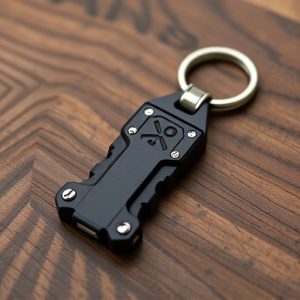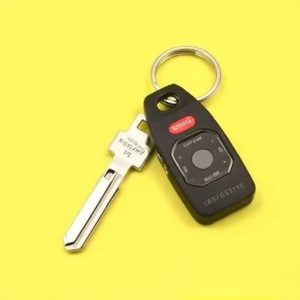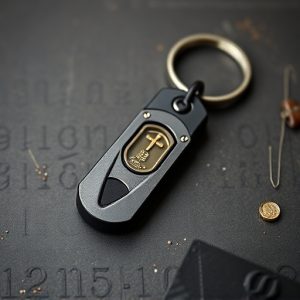Mastering Self-Defense: Discreet Keyring Options & Legal Permits
Carrying a self-defense keychain offers discreet personal security but is subject to regional Keycha…….
Carrying a self-defense keychain offers discreet personal security but is subject to regional Keychain Weapon Permit Requirements. Before acquiring one, thoroughly research local laws regarding weapon types, carry locations, and permit needs. Choose durable, compact devices with easy-to-use mechanisms that fit your keys and locking systems while adhering to legal requirements. Master discreet carry techniques for peace of mind in an uncertain world, prioritizing safety above all.
“Discover the power of discretion with self-defense keyring options, a convenient and often legal way to carry protection. This comprehensive guide explores the intricacies of navigating keychain weapon permit laws and regulations, helping you understand the requirements for such devices. We delve into choosing the right self-defense keyring, highlighting essential features and considerations. Additionally, learn expert techniques for discreet carry, ensuring safety and convenience. Uncover common questions and best practices to master effective self-defense with a keyring weapon, all while adhering to local laws.”
- Understanding Keychain Weapon Permit Laws and Regulations
- Choosing the Right Self-Defense Keyring: Features and Considerations
- Discreet Carry Techniques for Enhanced Safety and Convenience
- Common Questions and Best Practices for Effective Self-Defense with a Keyring Weapon
Understanding Keychain Weapon Permit Laws and Regulations
Carrying a self-defense tool on your keychain can be a discreet and convenient way to enhance your personal safety, but it’s crucial to understand the legal framework surrounding this practice. Different regions have distinct laws regarding keychain weapons, commonly known as Keychain Weapon Permit Requirements. These regulations dictate what types of devices are allowed, where they can be carried, and who is eligible to possess them.
Before investing in a self-defense keychain, it’s essential to research and comply with local and state laws. Some areas may require permits or specific licensing for certain types of keychain weapons, while others might have restrictions on the length of the device or the type of mechanism allowed. Understanding these legal nuances ensures that you remain compliant and can effectively protect yourself without drawing unnecessary attention.
Choosing the Right Self-Defense Keyring: Features and Considerations
Choosing the right self-defense keyring involves considering several key features and factors, especially in regions with specific keychain weapon permit requirements. First, look for a durable construction that can withstand regular use while remaining discreet. The size and weight should be minimal, allowing it to attach comfortably to your keys without adding significant bulk or noticeable weight. Secondly, the self-defense mechanism should be easy to operate under stress, featuring reliable functionality and a swift deployment process. Some models incorporate tools like pepper spray, flashlights, or even basic knives, each offering unique advantages based on personal preference and local permit rules.
Additionally, consider the keyring’s compatibility with your existing keys and locking mechanisms. A universal fit ensures you don’t need to adapt or replace your standard keys, while some keyrings may come with extra hooks or rings to accommodate a variety of key shapes and sizes. Lastly, familiarize yourself with the legalities surrounding keychain weapons in your area, ensuring compliance with local permit requirements for carrying self-defense tools on your keys.
Discreet Carry Techniques for Enhanced Safety and Convenience
In the pursuit of personal safety, the art of discreet carry becomes an invaluable skill. When incorporated with a keychain weapon, this technique allows individuals to empower themselves without drawing unnecessary attention. A small, well-designed keychain weapon can be easily concealed, fitting comfortably on a keyring alongside everyday accessories. This subtle approach ensures that self-defense remains close at hand, providing peace of mind in various scenarios.
Meantime, understanding the permit requirements for carrying such devices is paramount. Different jurisdictions have distinct rules regarding keychain weapons, so it’s crucial to familiarize yourself with local laws. Checking the legality and obtaining any necessary permits ensure that your right to self-defense aligns with legal boundaries, offering both convenience and protection without compromising safety or legality.
Common Questions and Best Practices for Effective Self-Defense with a Keyring Weapon
Many people consider carrying a self-defense keyring as a discreet and convenient option, but there are several common questions surrounding its effectiveness and legal aspects. Understanding the permit requirements is crucial before investing in such a tool. Each jurisdiction has specific rules regarding hidden weapons, and knowing your local laws is essential to avoid any legal repercussions. For instance, some areas may mandate a permit for carrying certain types of self-defense tools, including keyring weapons.
Best practices suggest keeping the keyring easily accessible while maintaining a low profile. This means learning proper handling techniques so you can quickly deploy it when needed, without drawing unnecessary attention. Additionally, regular training and familiarization with the device are vital to ensure confidence in its use. Always consider safety first; practice in safe environments and avoid situations that might lead to unnecessary harm or legal trouble.
Carrying a self-defense keyring can be a practical and discreet option for personal safety, but it’s crucial to understand local laws and regulations regarding keychain weapon permits. By considering essential features and practicing discreet carry techniques, you can ensure your keyring remains an effective and legal self-defense tool. Always remember to familiarize yourself with the keychain weapon permit requirements in your area and adhere to best practices for safe and responsible self-defense.


